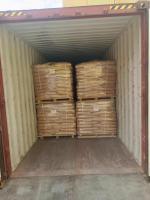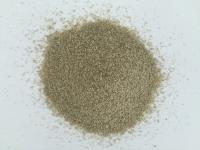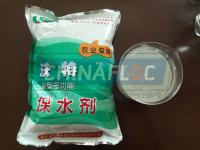Our Products
Product Center / what is function of SAP(Super absorbent polymer) used for mineral processing

what is function of SAP(Super absorbent polymer) used for mineral processing
Understanding SAP
Super absorbent polymers (SAP) are intriguing—typically found in industries like diapers and agriculture, their role in mineral processing is becoming pivotal.
Examining SAP's role
SAPs, often used in water regulation and dust control, are essential in managing tailings. Their ability to absorb water significantly impacts slurry viscosity, water retention, and dewatering processes.
Super absorbent polymers (SAPs) are a unique class of materials that can absorb and retain extremely large quantities of water relative to their own mass. In mineral processing, SAPs are utilized for a variety of functions that center around efficient water management, tailings stabilization, dust control, and overall process optimization. This comprehensive discussion explores the multifaceted role of SAPs in mineral processing, detailing their properties, mechanisms of action, and specific applications, while also addressing their impact on environmental sustainability and operational efficiency.
Properties and Characteristics of Super Absorbent Polymers
SAPs are cross-linked hydrophilic polymers capable of absorbing water and aqueous solutions up to several hundred times their own weight. Their chemical structure typically includes functional groups (such as carboxylate, hydroxyl, or amide groups) that attract and bind water molecules through hydrogen bonding and osmotic pressure. Once the SAP has absorbed water, it swells to form a gel-like material that retains the absorbed liquid even under pressure. This unique property makes SAPs valuable in processes where controlled water retention is crucial.
Key attributes of SAPs that are important for mineral processing include:
- High Absorption Capacity: Their ability to absorb large amounts of water can be leveraged to manage water content in slurries and tailings.
- Swelling Behavior: Upon absorbing water, SAPs expand, altering the physical properties of the medium, which can improve the handling and stability of processed materials.
- Chemical Stability: SAPs are generally chemically inert under processing conditions, ensuring that they do not interfere with mineral recovery or downstream processes.
- Environmental Compatibility: Many SAP formulations are designed to be non-toxic and environmentally friendly, which is important for applications in tailings management and water recycling.
Functions of SAPs in Mineral Processing
1. Water Management and Dewatering
Water is a critical component in mineral processing operations, yet its presence in excess can impede efficient separation and recovery of valuable minerals. One of the primary functions of SAPs is to assist in dewatering processes by absorbing surplus water from slurries and tailings. In many processing circuits, fine particles are suspended in water, forming slurries that need to be thickened or dewatered before further treatment. The introduction of SAPs helps by:
- Absorbing Excess Water: SAPs can quickly absorb free water from a slurry, reducing the overall water content. This results in a thicker, more manageable material that can be processed further.
- Facilitating Solid-Liquid Separation: By reducing the water content, SAPs enhance the efficiency of mechanical dewatering systems such as centrifuges, filters, and presses. The reduction in water improves the formation of cake solids, leading to a more efficient separation process.
- Improving Downstream Processing: Less water in the material means reduced energy consumption in subsequent drying or processing stages, and can also lead to higher recovery rates of valuable minerals by minimizing losses associated with excessive dilution.
2. Tailings Management and Stabilization
Tailings—the byproduct material left over after valuable minerals have been extracted—often consist of fine particles and water. Managing tailings is a significant challenge in the mineral processing industry due to potential environmental impacts such as water pollution, dam stability issues, and dust generation. SAPs play an important role in tailings management by:
- Converting Liquid Tailings to a More Solid Form: When added to tailings, SAPs absorb the excess water, causing the tailings to become more solid. This gel-like consistency improves the handling and storage characteristics of the tailings.
- Enhancing the Stability of Tailings Deposits: With lower water content, tailings dams and impoundments become more stable, reducing the risk of dam failures and associated environmental disasters.
- Reducing Seepage and Dust: SAP-treated tailings exhibit reduced water seepage, which minimizes the potential for contaminant leaching into groundwater. Moreover, the reduced water content limits the generation of dust, which is a common environmental and health concern in dry tailings storage areas.
3. Dust Control
Dust generated from handling fine particulate materials is a persistent issue in mineral processing operations. Dust can be hazardous to worker health, reduce air quality, and contribute to the loss of fine particles that may contain valuable minerals. SAPs help mitigate dust-related issues through:
- Moisture Retention: By retaining water, SAPs help maintain a damp environment within tailings and stockpiles. This moisture acts as a binding agent that prevents fine particles from becoming airborne.
- Forming a Gel Matrix: The swollen gel structure of SAPs can encapsulate fine particles, reducing their propensity to become entrained in the air. This encapsulation can lead to improved dust suppression, especially in arid conditions or during dry weather.
- Enhancing Surface Stability: The application of SAPs on exposed surfaces, such as tailings impoundments or stockpiles, can improve the overall surface stability and reduce the potential for wind erosion, further minimizing dust emission.
4. Process Optimization and Operational Efficiency
Beyond water management and environmental benefits, SAPs contribute to the overall optimization of mineral processing operations:
- Facilitating Uniform Material Handling: The gel-like consistency imparted by SAPs improves the rheological properties of slurries and tailings, making them easier to transport through pipelines and mechanical handling systems. This uniformity ensures consistent feed conditions for processing equipment, leading to more predictable and efficient operations.
- Reducing Equipment Wear: Excess water in processing circuits can lead to increased wear on pumps, pipes, and other mechanical components. By absorbing and managing this water, SAPs help reduce the operational strain on equipment, potentially lowering maintenance costs and extending the lifespan of machinery.
- Energy Efficiency: The dewatering effects of SAPs reduce the volume of water that needs to be evaporated or mechanically removed, thereby lowering energy consumption. This improvement in energy efficiency can result in significant cost savings, especially in large-scale processing operations.
5. Environmental Sustainability
Environmental stewardship is an increasingly important consideration in mineral processing. The use of SAPs contributes to more sustainable practices in several ways:
- Water Conservation: By enabling the recycling of water within the processing plant and reducing the need for fresh water intake, SAPs support sustainable water management practices. Water saved through these processes can be significant, especially in water-scarce regions.
- Reduced Environmental Impact of Tailings: Stabilizing tailings through SAP application minimizes the risk of dam failures, water contamination, and dust-related pollution. These improvements help companies meet environmental regulations and reduce the ecological footprint of their operations.
- Enhanced Safety: A reduction in airborne dust and improved tailings stability contribute to a safer working environment, reducing the risk of respiratory issues among workers and minimizing hazards associated with tailings dam breaches.
Mechanisms of SAP Action in Mineral Processing
The effectiveness of SAPs in mineral processing is largely due to their inherent chemical and physical properties. When introduced into a slurry or tailings deposit, the SAP molecules absorb water and swell, transforming from a granular or powder form into a viscous, gel-like substance. This transformation occurs through several key mechanisms:
-
Osmotic Pressure: The difference in osmotic pressure between the inside of the SAP structure and the surrounding solution drives water into the polymer network, causing it to swell. This mechanism allows SAPs to absorb large quantities of water rapidly.
-
Hydrogen Bonding and Electrostatic Interactions: The functional groups present on SAP chains form hydrogen bonds with water molecules, further stabilizing the swollen state. In some formulations, electrostatic interactions with ions in the solution can also play a role in the absorption process.
-
Cross-Linking Density: The degree of cross-linking within the polymer network influences the swelling capacity and mechanical strength of the swollen gel. In mineral processing applications, SAPs are engineered to balance high absorption capacity with sufficient mechanical integrity to withstand the stresses encountered in handling and dewatering processes.
-
Interaction with Particulate Matter: When SAPs are mixed with slurries or tailings, the swollen gel can interact with fine particles, promoting the formation of a coherent structure that improves the overall handling properties of the material. This interaction is particularly beneficial in processes where uniformity and stability are critical.
Practical Considerations and Challenges
While SAPs offer significant advantages in mineral processing, their implementation requires careful consideration of several factors:
-
Dosage Optimization: The amount of SAP required depends on the water content of the material, the specific mineral processing application, and the desired final consistency. Overdosing can lead to excessive viscosity, while underdosing may not achieve the desired dewatering or stabilization.
-
Compatibility with Other Chemicals: In many mineral processing circuits, SAPs are used in conjunction with other chemical additives such as flocculants, coagulants, or dispersants. Ensuring chemical compatibility is crucial to avoid adverse interactions that could reduce the efficacy of the SAP or other reagents.
-
Economic Considerations: Although SAPs can reduce operational costs by improving efficiency and reducing energy consumption, the cost of the polymer itself and its application must be justified by the overall benefits. Cost-benefit analyses are often conducted to determine the optimal use of SAPs in a given processing context.
-
Environmental Regulations: The use of SAPs must comply with environmental regulations regarding chemical additives. Manufacturers and operators must ensure that the SAP formulations used are non-toxic and do not contribute to environmental contamination.
Conclusion
Super absorbent polymers play a transformative role in mineral processing by addressing key challenges related to water management, tailings stabilization, dust control, and process optimization. Their unique ability to absorb and retain large amounts of water makes them invaluable for dewatering applications, enabling the conversion of liquid slurries and tailings into more manageable and environmentally stable forms. By enhancing the stability of tailings deposits, reducing dust emissions, and improving the rheological properties of materials, SAPs contribute significantly to operational efficiency and environmental sustainability.
The mechanisms by which SAPs function—including osmotic pressure, hydrogen bonding, and cross-linking—are critical to their performance in challenging processing environments. Although the implementation of SAPs requires careful attention to dosage, chemical compatibility, and cost considerations, the overall benefits in terms of improved water conservation, reduced energy consumption, and enhanced tailings management are compelling.
As the mineral processing industry continues to evolve, innovations in SAP technology are likely to further optimize water management strategies and support more sustainable and efficient processing operations. With ongoing research and development, SAPs are poised to play an increasingly vital role in meeting the dual challenges of resource efficiency and environmental responsibility in the mineral processing sector.





